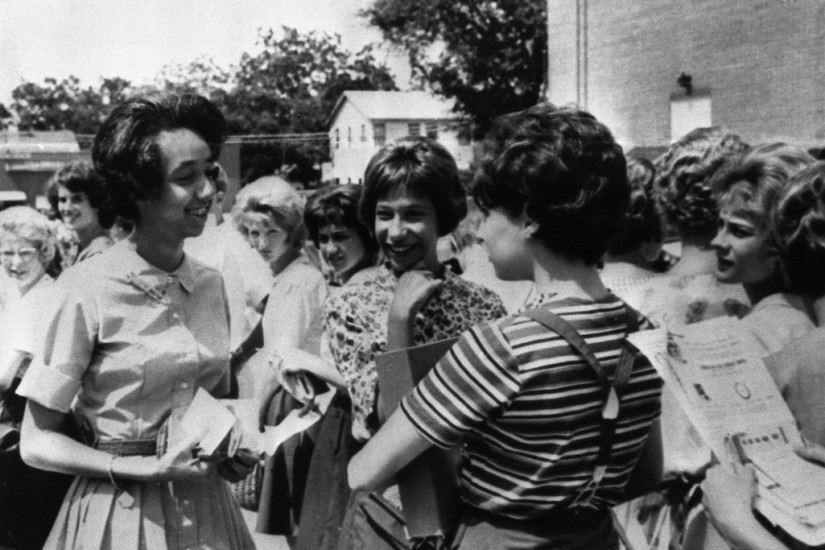Before Brown, some dozen lawsuits were filed on behalf of young black women attempting to enroll in all-white schools—and after Brown, black girls, almost exclusively, did the hard labor of walking through all-white mobsand sitting in previously all-white classrooms, with sometimes hostile classmates and teachers, in pursuit of school integration.
I spoke with Devlin about the black youth who led the effort to racially integrate schools and catalyzed the broader anti-segregation movement. The interview that follows has been condensed and edited for length and clarity.
Melinda D. Anderson: A disproportionate number of black girls were at the forefront of the school-desegregation movement from the late ’40s to the mid-’60s. Why were black girls continually chosen to break the color barrier?
Rachel Devlin: Interestingly, there are no written records about why girls were chosen over and over again in individual lawsuits. These choices were made on a level that was not always entirely conscious. Parents would explain why they should file a lawsuit, and girls agreed. Many of them said, “I was willing.” Other parents drafted their daughters, and the young women cooperated, yet most of the young women who participated were fully invested in school desegregation.
The other thing about girls is that they were good at it. To speak to principals and lawyers and the press you have to be poised, you have to be personable and diplomatic, and young black women had these attributes. They dealt with constant verbal and sexual harassment on the streets of southern cities, of northern cities, and they were acutely aware of their self-presentation in public. It was drilled into them as a way to protect their dignity. Also, very few African American girls and young women did not at some point in their lives work in a white home, and they had to learn how to navigate around white people.
But I want to be clear. This was not just about being accommodating—they knew how to stand their ground. Girls were good at combining different forms of bravery; they could be both stubborn and tough, but also project social openness. They had that sense of self-possession that was extremely useful in these situations.
